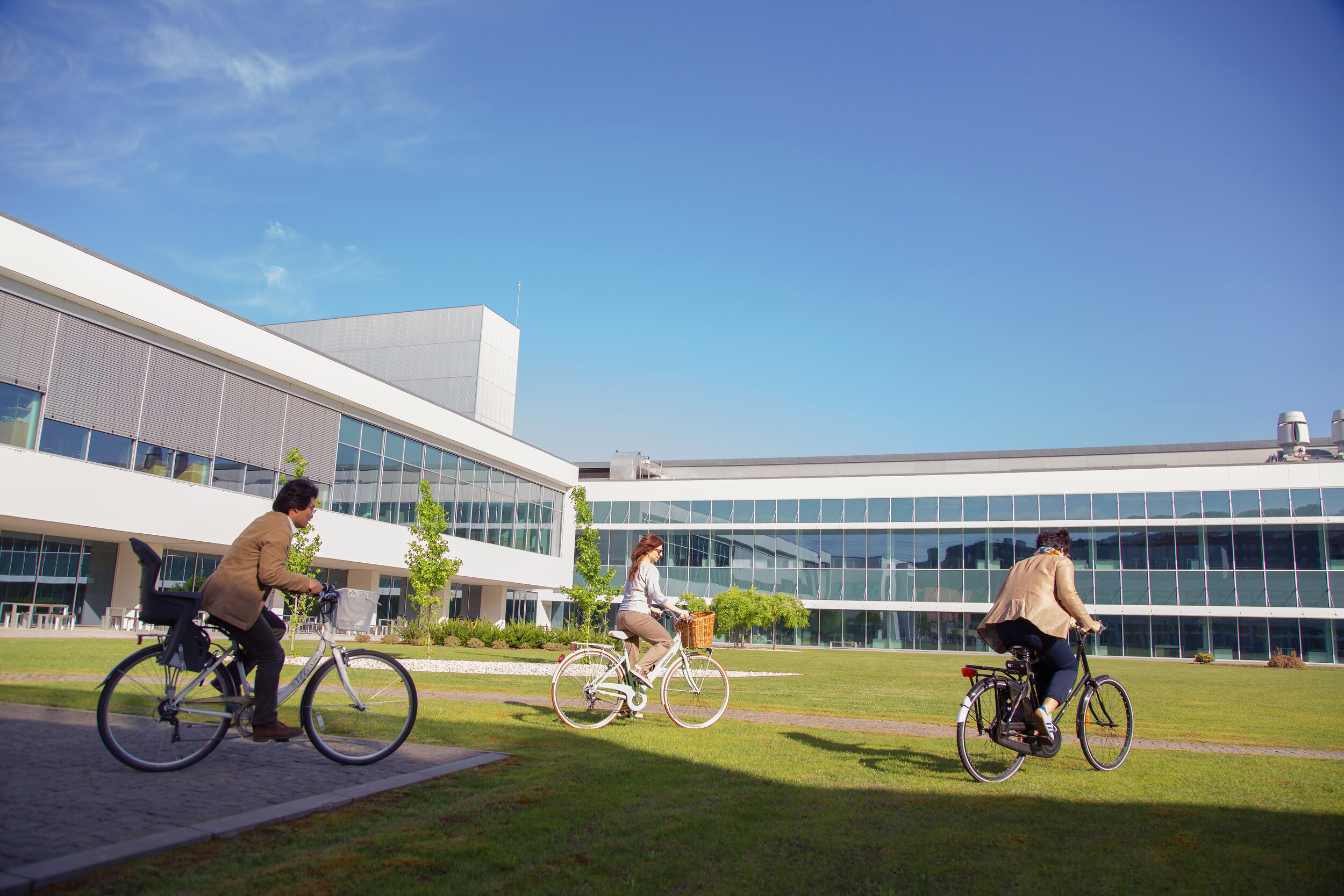About
The INL – International Iberian Nanotechnology Laboratory was established in 2011 to foster interdisciplinary research in Nanotechnology and Nanoscience. INL is an Intergovernmental institution (IGO) aiming to attract some of the world’s best scientists and engineers. It is the only nanotechnology research organisation worldwide with an international legal status and offers advanced comprehensive research facilities, where biologists, physicists, materials engineers, chemists, electronic engineers, and pharmacists gather from around the world to work together on interdisciplinary projects.
The INL campus comprises brand new infrastructure that was designed and built specifically for the organisation’s nanotechnology-focused research and technological development (RTD) activities and is equipped with the latest instrumentation and equipment to address the major challenges in fabrication, characterization, and other aspects of nanotechnology and nanobiotechnology for applications in the areas of health, food and environmental safety, ICT, and energy. This integrated research infrastructure comprises central laboratories and specialized laboratories associated with individual research groups or research topics.
The top-down nanofabrication activities at INL are carried out in the central clean room facility (total area 1000 m2, class 100 and class 1000) and associated laboratories dedicated to Micro-Electro-Mechanical Systems (MEMS), spintronics, graphene, lab on chip. The bottom-up synthesis of nanomaterials is carried out in several dedicated nanochemistry laboratories. Both nanofabrication and nanochemistry efforts are supported by comprehensive nanocharacterisation facilities that include state-of-the-art electron microscopes, surface and interface characterization instruments, optical spectrometers as well as facilities for characterization of nanomaterials and for magnetic characterization. Development of nanomaterials for energy applications is further supported by dedicated deposition facilities and by instrumentation for comprehensive testing of solar cells and energy-storage devices. Applications of nanotechnology and nanobiotechnology in the areas of health and of food and environmental safety are investigated with the help of shared facilities for working with biosensors, microfluidics, molecular biology, microbiology, and animal cell cultures. Advanced optical microscopy, scanning probe microscopy, electron microscopy facilities, as well as cytometry and optical spectroscopy instruments support research activities related to biological samples and materials.
Braga, an UNESCO creative city
VISIT BRAGA
Situated in northern Portugal, Braga is the country’s oldest city and a beautiful destination with rich culinary tradition and stunning architecture. This modern city is home to the iconic Bom Jesus Sanctuary, impressive churches and monuments.
Braga creative city for two millennia
Braga was selected as a UNESCO Creative City for the field of Media Arts. Since its foundation the city has been in the avant-garde of its different contemporary scenarios, whether it was under the roman empire or during the sumptuous baroque period. With each challenge, the city has become richer in diversity and more curious about near future.
Braga is a lively city, one of the oldest in the country, and is teeming with young people who study at its universities.
Built more than 2,000 years ago, “Bracara Augusta” was, as the name indicates, founded by Augustus; it was located on one of the main Roman roads in the Iberian Peninsula, since it was the administrative seat of the Empire, and later given the status of capital of the Roman province of Gallaecia, present-day Galicia, by Emperor Caracalla. The Braga Diocese is the oldest in Portugal and, in the Middle Ages, the city even competed with Santiago de Compostela in power and importance. One of the Camiños de Santiago passed through here, when this pilgrimage cult grew with the Christian reconquest and the foundation of Portugal.
Braga’s Cathedral is also the oldest in the country and was built in the 12th century by the parents of Portugal’s first King, D. Henrique and D. Teresa, who are buried there. Braga is to this day one of the country’s main religious centres, having the Holy Week Celebrations and the São João Festival as the highlights in its liturgical and tourist calendar.
Besides the Tesouro-Museu da Sé (Cathedral Treasure Museum), it is worth visiting the Biscainhos Museum, housed in a Baroque palace, a landmark period in the history of Braga, and the D. Diogo de Sousa Archaeological Museum, since the city also abounds in remains from the Roman era. We suggest a leisurely stroll around the historic centre to visit some of the many churches, admire the houses and historical buildings, such as the Palácio do Raio, the Theatro Circo, the Arco da Porta Nova, and to have a coffee at the emblematic Brasileira with a view of the busy Avenida Central. But Braga is considered the youngest city in Portugal and, from its contemporary landmarks, the Braga Municipal Stadium stands out, designed by Souto Moura, one of the most prestigious Portuguese architects and winner of the Pritzker Prize.
Every visitor to Braga must see the Bom Jesus Sanctuary, a city icon, with its monumental staircase. Amid an expanse of greenery, it offers an excellent panoramic view of the city, as do two other churches nearby: Nossa Senhora do Sameiro Sanctuary, an important place of Marian worship, and Santa Maria da Falperra Church. Outside the historic centre, São Martinho de Tibães Monastery and S. Frutuoso de Montélios Chapel also warrant a visit for their beauty and historical significance.
In terms of gastronomy, codfish prepared in the Braga, Narcisa or Minho styles has to be inevitably mentioned, as well as roast kid and Pudim Abade de Priscos (crème caramel with bacon). Night-life, in this city of students, is not to be missed, as there’s some form of entertainment for everyone.
Over the last few years, the University and the quality of contemporary architecture have instilled an atmosphere of youthful vibrancy which has brought this ancient city an unexpected modernity.

